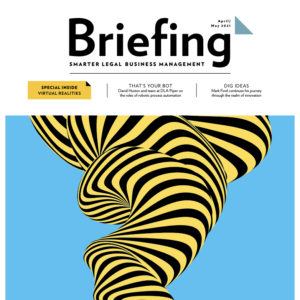blog
Maximizing Content Migration Podcast with Ari Kaplan: Recap
Last month Dan Anderson, CEO of SeeUnity, was a featured guest on legal industry analyst Ari Kaplan’s blog “Reinventing Professionals.” They discussed the genesis of SeeUnity, and why it stands out among similar companies in the legal sector.
SeeUnity was created in 2005 by two industry veterans to provide “out-of-the-box solutions” using the early versions of SharePoint, a Microsoft Office system. Dan Anderson came from the product sales perspective, while Dan Hunsinger, SeeUnity’s CTO, came from a background in product solutions. It was with this combined knowledge that they were able to create tools that would allow companies to seamlessly integrate and connect ECM systems together, as well as simplify user access and promote user adoption. SharePoint was chosen as the initial platform because of Microsoft’s impact on the ECM industry, and because it allowed for SeeUnity’s products to extend to migration and consolidation solutions as it matured.
Since SeeUnity provides solutions to law firms, it is important to be aware of the challenges that firms are facing. Currently, IT is no longer trying to support custom integrations. Instead, they are moving towards developing a simpler way to integrate that will still meet the needs of both the client and the customer. By using the underlying APIs of their systems, firms can, as Dan stated, “…react and support solutions that can help them really provide the various options to the clients, as well as the ultimate end users, without having to support custom integrations.”
One topic that Dan covered in-depth was the concept of content transformation and how to educate customers on the ways in which data is “transformed” during the migration process. The existing content is “cleaned up” as it is moved from the on-premise or legacy DMS and allows users to fully take advantage of the features and functions offered within the cloud. This replaces a process known as a “lift and shift” migration, which moves content without transforming any of the data. A point that Dan stresses throughout his discussion about migration is the importance of making decision points to better manage user expectations. By utilizing SeeUnity’s tools and having decision points in place, moving data to the cloud encourages better user adoption with the added benefit of data transformation, removing the complications that would arise if content was simply replicated in a new system.
Migrating to the cloud does lessen the option to create customized solutions. With an on-premise setup there is more of an opportunity for control. In conjunction with this, however, Dan spoke about how SeeUnity’s products have a “less is more” type of functionality which simplifies integration and configuration. Without the added complexity of customized integrations, the overall system is easier to support, and the cost is also reduced.
Another question Ari had was how SeeUnity promotes adoption of its products in law firms. Dan covered the three ways in which the company does this. The first is through resellers who use SeeUnity’s solutions for their own customers. Technology companies also use the solutions to extend the value of their products to firms which allows them to integrate with other types of platforms. Aside from these two approaches, SeeUnity also promotes adoption through simply selling direct to customers. Dan said, “Our products allow connections to more systems and support users’ needs from a consumption perspective.”
The final part of the podcast was discussing the future of the law industry and the movement to cloud-based platforms. Right now, many firms are using a hybrid, or on-premise and cloudstems that support cloud to cloud integration will be provided, streamlining the entire integration process.
In sum, Dan discussed parts of each of the SeeUnity products: Fusion Content Integration, Echo Content Synchronization, and Velocity Content Migration. For more information about SeeUnity’s solutions, visit the Solutions for Law Firms page on our website.
Related Posts

Product Updates & Roadmap 2023-24 (Europe Session)

Product Updates & Roadmap 2023-24 (North America Session)

Migration Tool Choice Directly Impacts Project Cost & Success – ILTA Sponsored

SeeUnity’s Product Updates & Current Roadmap Q1 – 2022

Special Edition ILTACON ILTA TV: SeeUnity Interview with Dan Anderson


